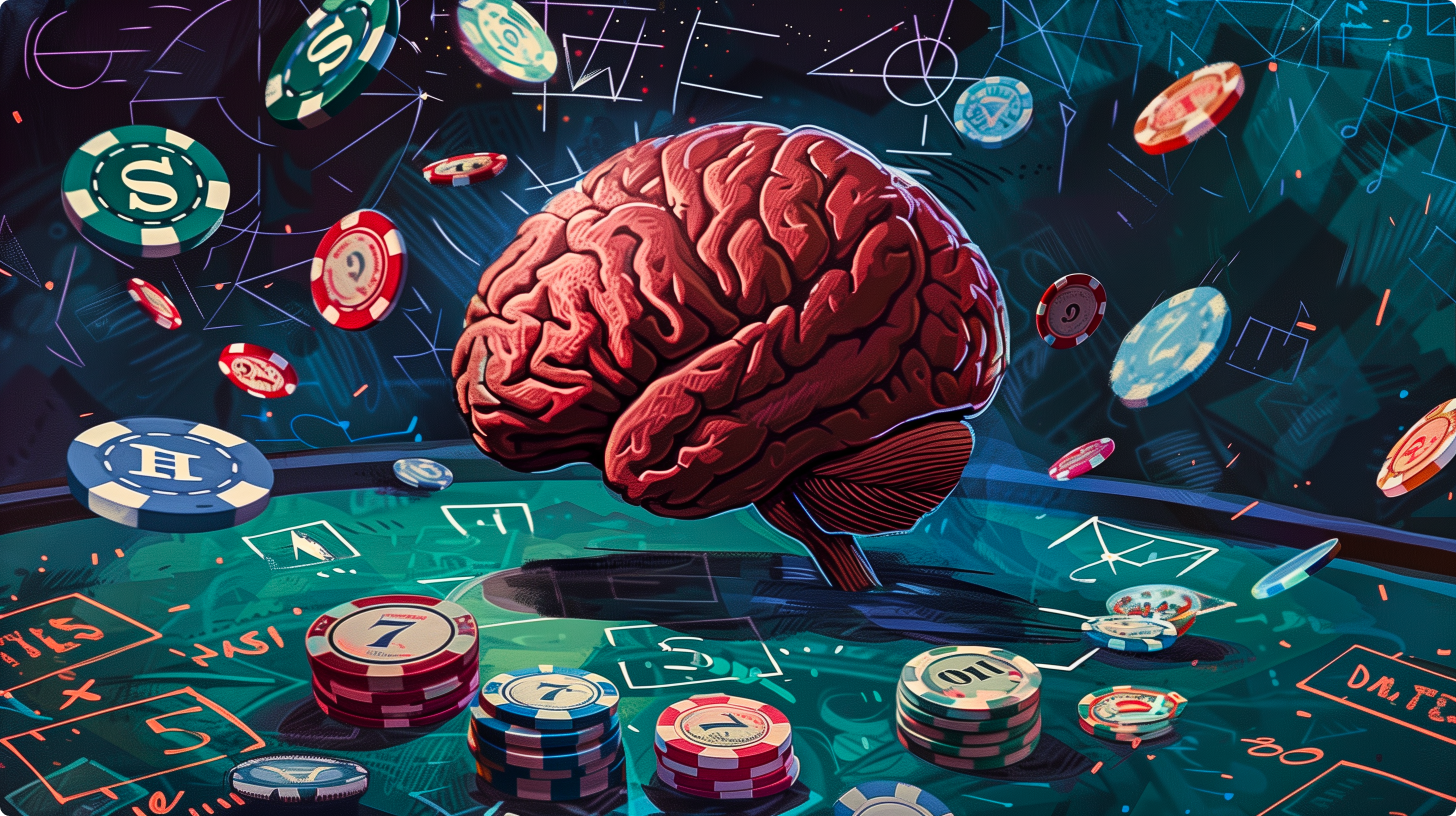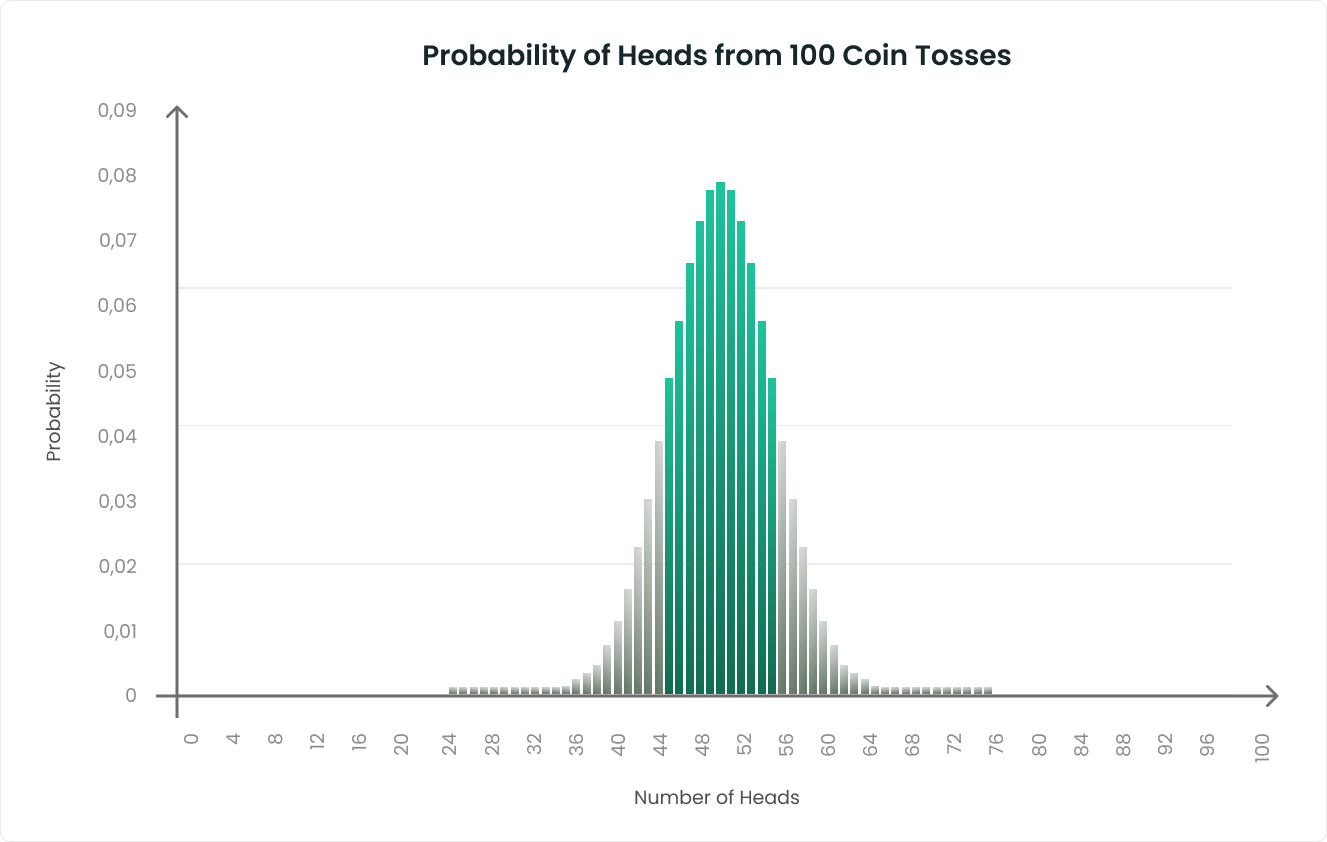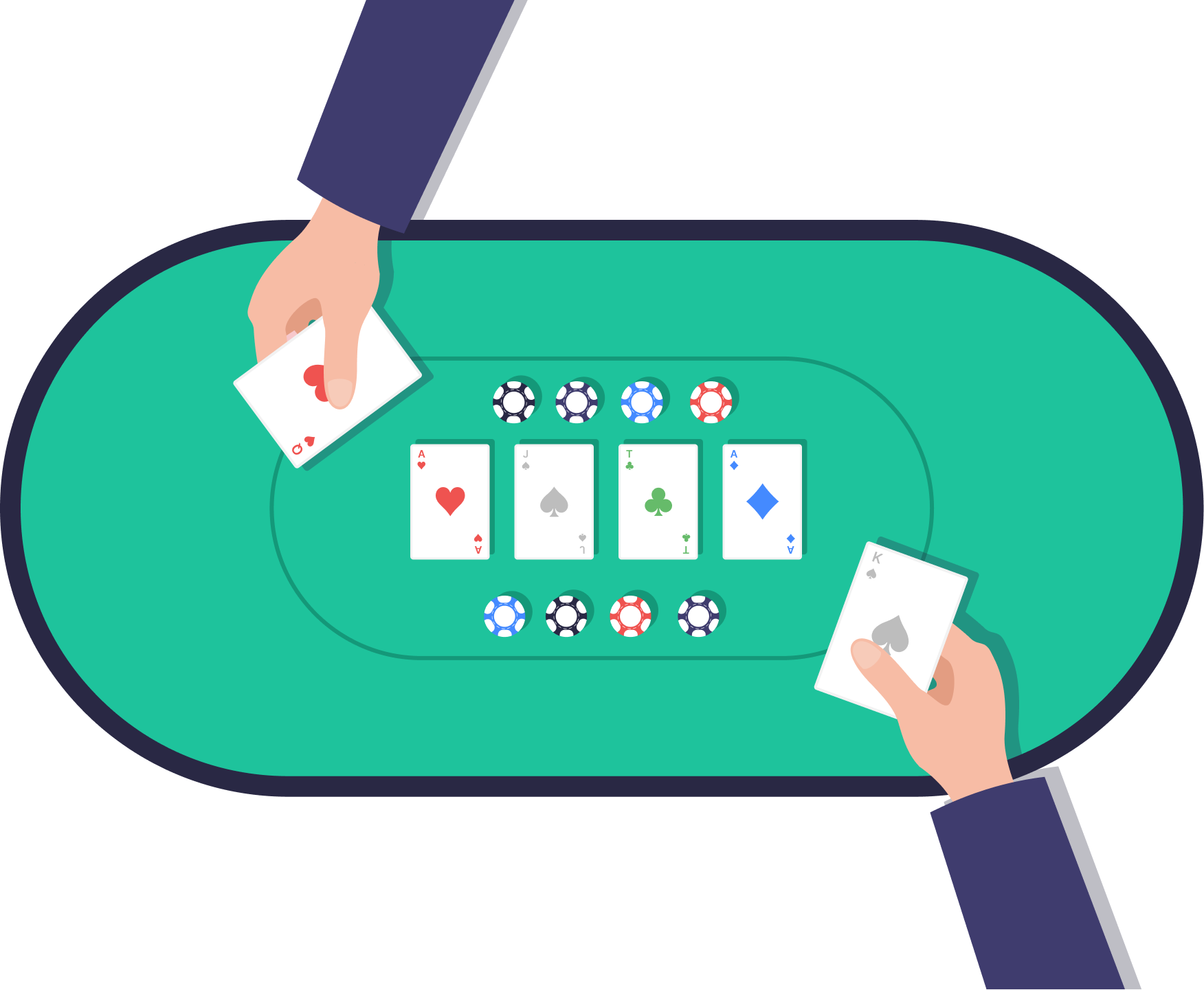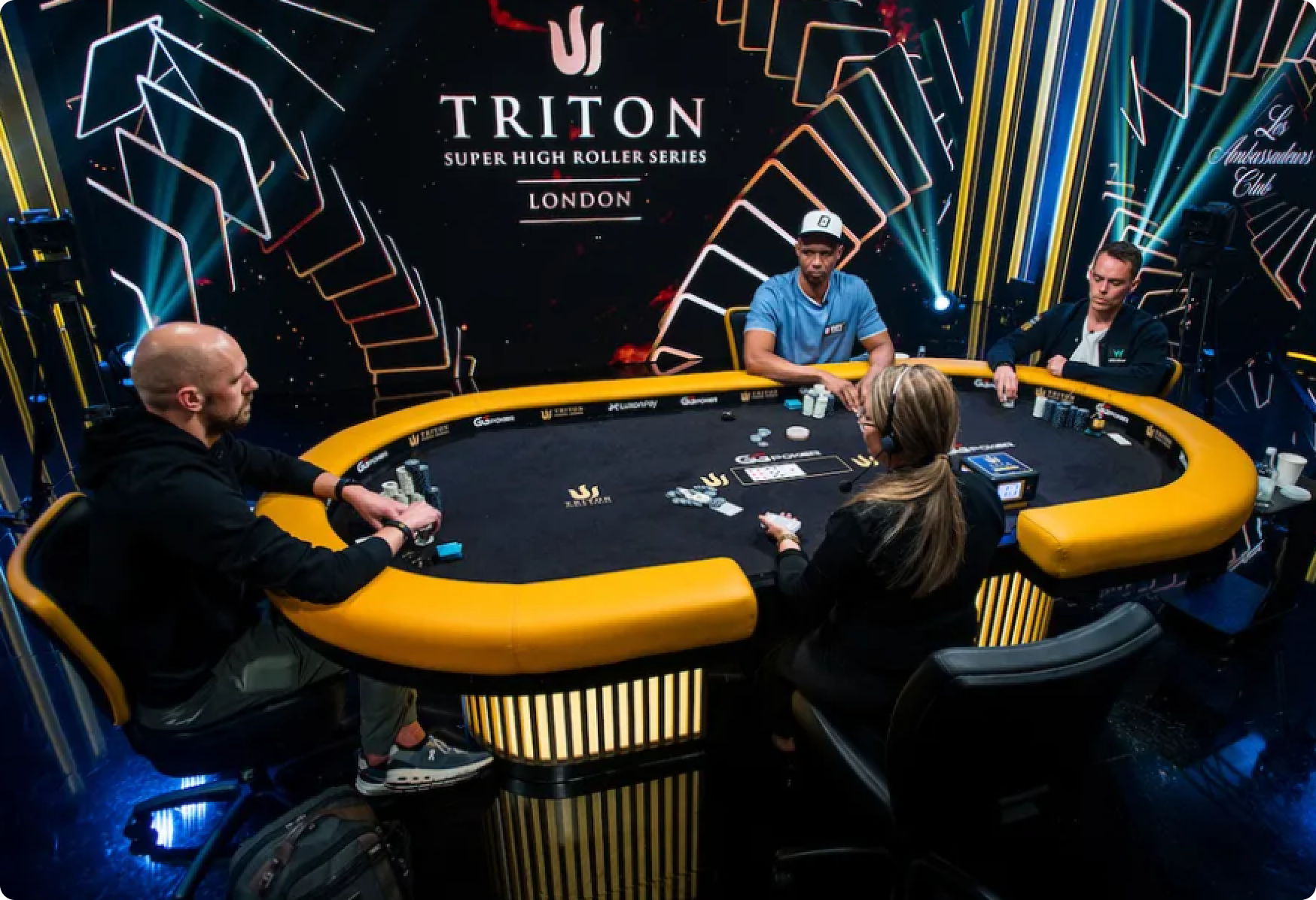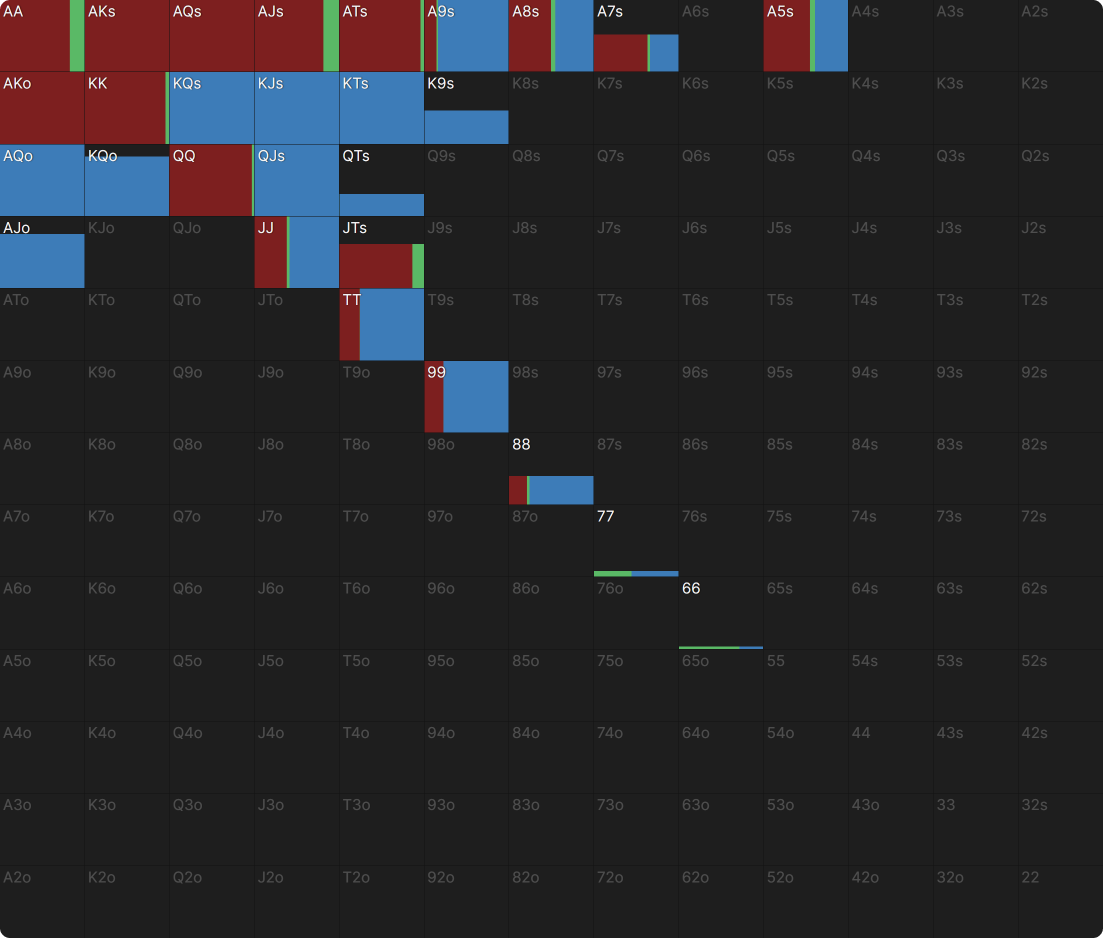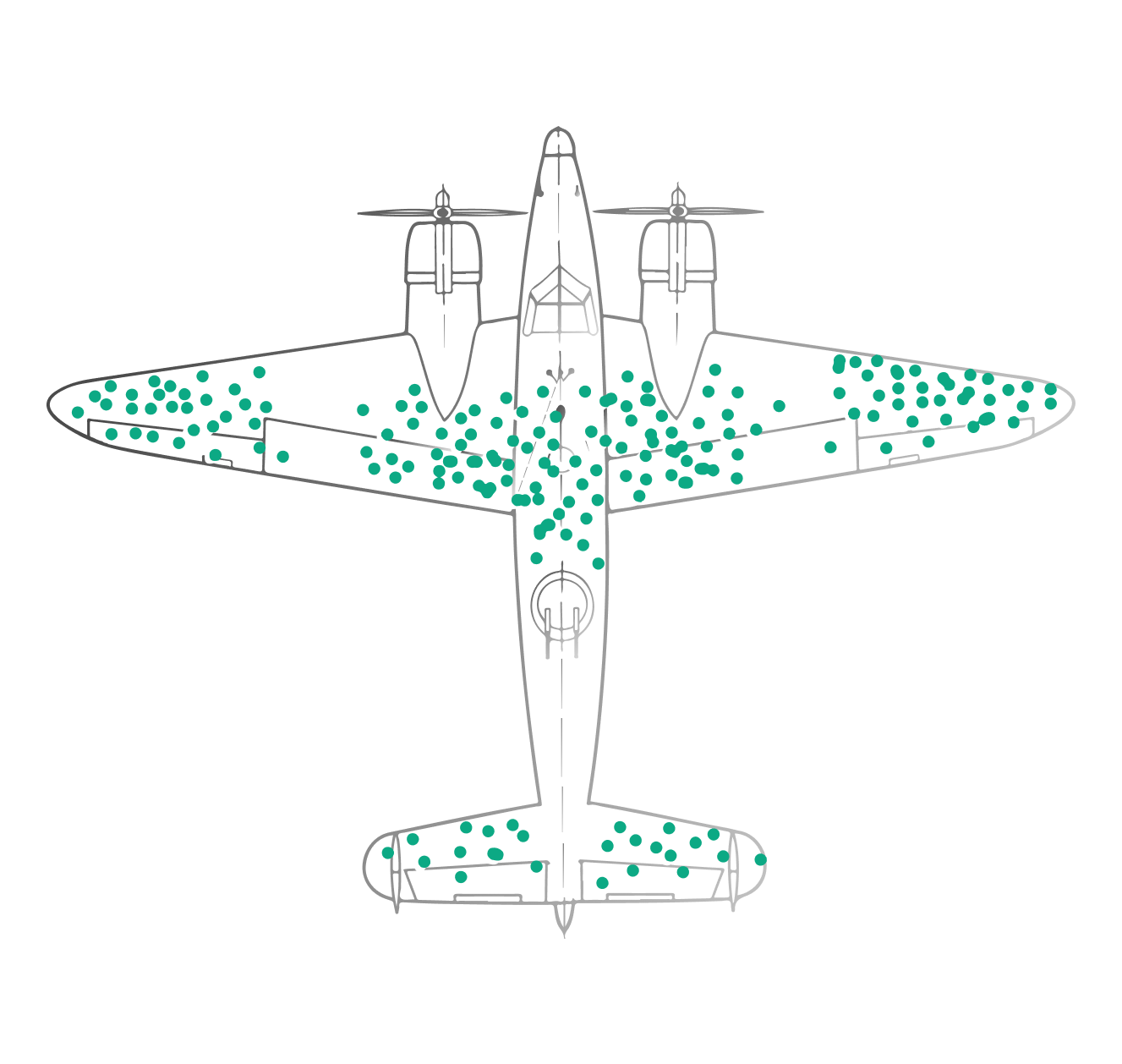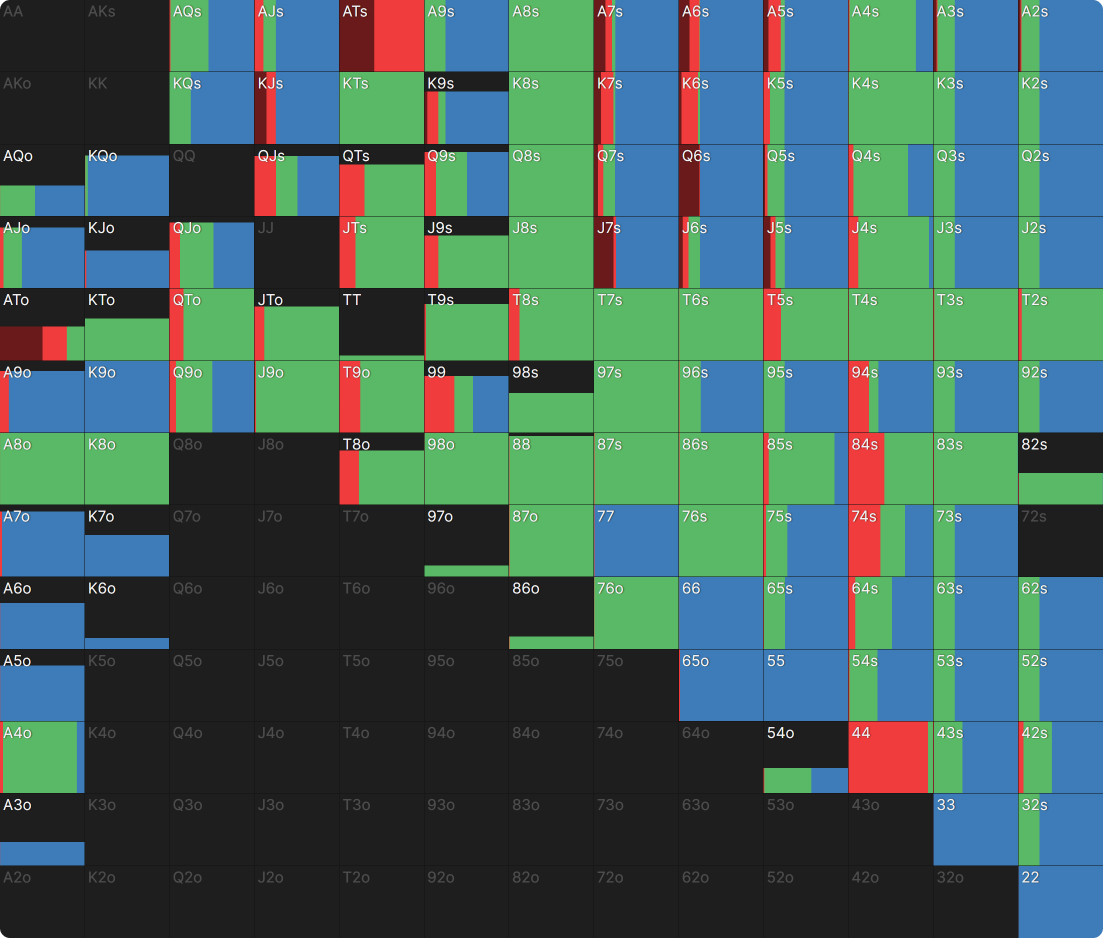A Poker Player’s Guide to Conquering Cognitive Biases – Part 1
In my article on confirmation bias, I mentioned that there are many cognitive biases and fallacies that impact gambling decisions, especially poker. This is undoubtedly because the human mind has not evolved to naturally comprehend the varianceVariance
Variance measures how far a set of numbers differs from the mean. In poker, variance often refers to how “swingy” a game or strategy is relative to your win rate. Variance can also be defined as the square of standard deviation, usually measured in bb/100. and uncertainty of the type we are subjected to in this game.
Indeed, much of the research that led to the coining of the fallacies and biases that we’re about to cover was influenced by gambling because games of chance were often used as a model. In some instances, these psychological misconceptions were discovered when the originators were trying to solve probabilistic problems.
What follows are some of the most common fallacies and biases that poker players especially have to contend with.
The Gambler’s Fallacy
The gambler’s fallacy, also known as the Monte CarloOn August 18, 1913, at the famous casino in Monte Carlo, Monaco, the roulette ball fell black 26 times in a row. Gamblers, seeing the streak grow, increasingly shifted their bets to red, feeling that an excess of reds was due to counterbalance the remarkable black streak. They lost millions. fallacy, is:
The mistaken belief that a random, independent event is more or less likely because of a previous random outcome.
For example, you flip a coin three times, and it lands heads three times. This fallacy will have you believe that it must come tails this fourth time.
Coin tosses over a large sample will follow a normal distribution, i.e., a bell curve. This is because they are random, independent events. In this case, each coin toss is uninfluenced by previous coin tosses. “The coin has no memory.”
For example, you flip a coin three times, and it lands heads three times. This fallacy will have you believe that it must come tails this fourth time.
Coin tosses over a large sample will follow a normal distribution, i.e., a bell curve. This is because they are random, independent events. In this case, each coin toss is uninfluenced by previous coin tosses. “The coin has no memory.”
However, humans have a hard time grasping the streaks that will occur within such distribution. For example, here is the result of a sequence of 100 coin tosses I set up using an online random generator. It ended up with 49 heads and 51 tails:
There are many sequences of four and one sequence of five and even six of the same result in a row.
The human mind, however, is expecting to see something like this, which I had to create artificially:
Gambler’s Fallacy in Poker
It’s easy to see how the gambler’s fallacy can permeate and be very harmful in poker. If you miss the flop three times in a row, you will convince yourself you are ‘due’ to hit the next flop. If you take two bad beats in a row, you can persuade yourself it’s ‘your turn’ to get lucky. It will cause you to overplay your hands when you think you are poised to have your fortunes change. Or, in the other direction, you shy away from a profitable spot because you have already had a good run.
The gambler’s fallacy is also what causes some players to struggle with variance. At some point, you will run worse than you ever thought possible. What often follows is a great sense of injustice or even paranoia because what you are going through seems so outlandish and impossible that you feel there must be another explanation beyond dumb luck.
Recency Bias
Recency bias is a specific form of the gambler’s fallacy, as it is:
The mistaken belief that recent random, independent events will happen again soon.
In the context of flipping coins, it is believing that because the coin toss came up heads three times in a row, it will do so for a fourth time.
- The similarity with the gambler’s fallacy (as discussed above) is that this misconception also stems from a false assumption that there’s an influence from past random, independent events on future random, independent events.
- The difference with the gambler’s fallacy is that the direction of that supposed influence is now pointed to recurrence (instead of nonrecurrence).
A common example of recency bias can be observed whenever a shark attack happens. In 2023, only ten people died in shark attacks; however, whenever it does happen, the number of people who swim in the ocean goes down considerably.
Recency Bias in Poker
Recency bias permeates poker in several ways, but perhaps the most illustrative case is when players believe a certain hand is lucky or cursed. If you have lost a flip four times with AKs, you might feel compelled to play it more conservatively a fifth time, even though it is one of the strongest hands in Hold ’em. Likewise, if you flop a set with 22 twice in a session, you might overplay it in the future, assuming it’s a lucky omen for you. After all, “Deuces never loses,” right?
Recency bias surrounding a hand can also spread to the table if a particular hand, for example, has been unlucky amongst the players. This happens a lot in live poker, where it may be declared that “Fives are unbeatable today” or “Queens are no good at this table,” and you can often find that the dynamic of the table is influenced by small coincidences in the card distributions.
Gambler’s Ruin
The next topic I have chosen is not a fallacy in itself, but it’s a concept many poker players do not understand, which leads to poor decisions. The strategy to deal with it is a very useful heuristic that overcomes the flawed thinking surrounding it.
Gambler’s ruin refers to the fact that:
Anyone who plays a fair game with a negative expected value will go broke, regardless of their betting system.
If, for example, you play roulette and always pick red, you will eventually go broke because of the house’s edge; in this case, when it hits zero.
Let’s imagine you had to double your money playing roulette. The worst strategy would be to make $1 bets and hope to run it up. Your best approach would be a ‘bold strategy’. In this example, that would be to put your entire $100 on red or black and bet just once. The reason for this is that the more iterations there are, the easier it is for the party with the edge to realize their advantage.
If you had to play LeBron James at basketball and he allowed you to pick the number of baskets before a winner was decided, you should choose a single basket as the target. You are 99.99% going to lose in either scenario, but you always have a ‘puncher’s chance’ if you just fling the ball over your head as soon as the game starts and hope it goes in the hoop.
Gambler’s Ruin and the Bold Strategy in Poker
Gambler’s ruin and the bold strategy are useful to know when you are playing in a poker game where you are the underdog. Let’s imagine that you have qualified for a Triton event, which would be an amazing experience for most players, to go to a luxury destination and play for millions against the best in the world.
Most amateur players would get to the table when the first card is dealt to get the most from the experience. The problem with this is that they would have to play deep-stacked poker against elite players. The correct ‘bold strategy’ would be to max late reg. Now, some of the field will already be eliminated, and because the average stack depth has become shallow, it will be harder for the elite players to realize their edge. No matter how good Phil Ivey is, if you have 20bb and top pair, it will be hard to play it terribly.
Likewise, you may have a tough seat at an otherwise soft tournament. Let’s say a crusher gets moved to your immediate left. A good bold strategy would be to play fewer pots with that more skilled player, but when you do, make the pot bigger than usual. Reducing the SPR and starting with a much stronger range of hands is an effective way to survive being out of position to a superior player. Playing lots of small pots out of position is a surefire way to let them realize their edge against you.
The Sunk Cost Fallacy
The sunk cost fallacy is:
The mistaken belief that because we have already invested a lot in and/or have an emotional attachment to something, we should continue on with it even though it’s not worth it (anymore).
It could be an old car we have spent a lot of money on for repairments, a failing marriage, or a business we have poured our heart and soul into. There are some things we should just let go of, but we can’t because we are monetarily or emotionally invested and perhaps tie part of our identity to it.
The sunk cost fallacy is deeply seeded in every ‘sticky‘ player. Passive, sticky players have a hard time letting go of their mediocre hands on the river, leading them to pay off value too often. Aggressive, sticky players find it difficult to give up on bluffs, causing them to get caught too often. We obviously do not want to be in either of these suboptimal scenarios.
Let’s tie it to practice with a quick example from GTO Wizard that might help you curb these types of impulses.
This is a near-bubble ICM scenario where UTG on 17bb has opened. The HJ, playing 9bb, responds like this:
Most hands shove, but there is a small ‘click’ (i.e., a min-reraise) range with AA for value and low, suited Ace-x as bluffs. Betting 4bb over a 2bb open-raise when you only have 9bb is perplexing to some people. Why would anyone ever fold to such a small raise, and surely we can never fold when the click gets shoved on?
Well, when we do min 3-bet, this is how UTG responds:
There is actually plenty of folding, and our bluffs make better hands fold. When UTG does 4-bet shove, this is what the HJ does:
HJ does indeed fold.
Players with issues related to the sunk cost fallacy would have assumed in both spots that the players were pot-committed, whereas they were not.
Survivor Bias
Survivor bias is:
The flawed inclination to concentrate on a sample of data that has passed a selection process and overlook those that didn’t. We focus on the survivors, hence the name.
A very famous visual example of survivor bias is the analysis of Allied aircraft in World War II. The image below shows where the planes that returned home from missions had taken direct hits. This was initially used as a catalyst to plan where to put more armor on the plane for future missions. Wherever the aircraft got shot, more armor should go, the reasoning went.
Survivor Bias in Poker
Survivor bias is rampant in poker, leading to behavior such as the community’s tendency to lionize players who have won big tournaments. There was a time, for example, when the WSOP Main Event winner was guaranteed a lucrative sponsorship deal when, in reality, variance played a massive role in that outcome. I once overheard 2004 champion Greg Raymer say that he won 16 coinflips in a row on his way to the title. Putting poker players on a pedestal for a single-event victory is a mistake in respect to hailing them as undisputable world-class players, though, in my opinion, Raymer became one of the great ambassadors of the game.
A more pernicious outcome of survivor bias is when a poker player uses standalone results like that as a way to sell action or even sell coaching products. There were a lot of poker players who shone brightly during the glory years of poker, when games were at their softest, and still have a lot of authority in this respect today. Anyone selling action or advice should be met with some healthy skepticism (and it would be remiss of me not to state at this point that I am not a professional player, merely a writer with a foot in the solver world, and you should treat anything I say with skepticism too).
Prospect Theory
Prospect Theory, formulated by Amos Tversky and Daniel Kahneman, asserts that losses and gains are viewed differently. Losing hurts more than winning feels good. It states that:
Humans are much more motivated by avoiding the prospect of loss than they are by the prospect of potential gain.
The theory earned Tversky and Kahneman a Nobel Prize.
When people are presented with a choice between $50, or a 50/50 chance to win $100, most will take the guaranteed $50, even though the expectation of both options is the same. You see this manifest a lot in game shows like ’Deal or No Deal’ or ’Who Wants to Be a Millionaire’. The contestants will have ‘earned’ a particular cash prize, then become so attached to it that they will take a very bad deal to secure what they already have.
The theory earned Tversky and Kahneman a Nobel Prize.
When people are presented with a choice between $50, or a 50/50 chance to win $100, most will take the guaranteed $50, even though the expectation of both options is the same. You see this manifest a lot in game shows like ’Deal or No Deal’ or ’Who Wants to Be a Millionaire’. The contestants will have ‘earned’ a particular cash prize, then become so attached to it that they will take a very bad deal to secure what they already have.
Prospect Theory in Poker
Prospect theory is rife in poker. First of all, just think about the number of bad beats you endure or dish out in a session. Over the long term, they will be equal in number, but we remember the bad beats/losses we take so much more. We have all had sessions where we are utterly blind to, or dismissive of, the bad beats we inflict on others but develop a sense of injustice around the ones we take.
Prospect theory also presents itself in the endgame stages of MTTs. We all know that short stacks should play tight near bubbles, but some players will blind away to lock up a min-cash and give themselves no decent chance to win. Prospect theory also explains why some people will take terrible final table deals to lock up an amount they feel they deserve.
I have my own personal example of this, which I have managed to fix thanks to GTO Wizard. Here is an example to demonstrate. The BB has checked, and UTG has bet on a T♦8♦4♠ flop. This is the BB response:
The best draws here are J♦9♦, 9♦7♦, A♦Q♦ and diamond draws that have also paired the 4 like A♦4♦ and Q♦4♦.
Notice that almost all of them are played as calls rather than raises. A hand like A♦4♦ has 68% equity and is called, whereas a ‘weaker’ draw like K♦6♦ is mostly raised, and it has only 48% equity. A lot of people prefer to check-raise the stronger draw over the weaker one, but that is not optimal. This is an equity realization issue. Taking down the pot with K♦6♦, which only has 48% equity, is a good result. You under-realize equity if you get your opponent to fold when you have 68% equity, like you do with A♦4♦. Calling with a hand like A♦Q♦ also means the pair outs of the hand are better preserved, as a stronger range of hands continues against a check-raise.
I struggled with this and always sought to get it in on the flop with my big draws. This was a version of prospect theory, much like the studies where people are offered $50 now or a 50/50 chance to win $100. I did not want to lose on the river with a missed draw and would opt to take the relatively more guaranteed pot on the flop while I still had a lot of equity, so I would always bet in these spots and then feel a little disappointed that I didn’t win more. Poker prowess, ultimately, is not measured in the amount of pots you win; it’s measured in the amount of value you generate. This was a genuine leak that I fixed with the help of GTO Wizard.
Illusion of Control
Illusion of control is:
The tendency to believe we have more influence on events than we actually do.
This is why racehorses are given ambiguous and eye-catching names. Recent Grand National winners have been called things like ‘One for Arthur,’ ‘Rule the World,’ ‘Don’t Push It,’ and ‘Comply or Die.’ Most of us can shoehorn a meaning to at least one of these names. Does anyone in the room have an acquaintance or pet called Arthur? This makes it more likely that a novice will bet on them. A meaningful name gives a recreational gambler a sense of some control over the outcome when, in reality, they are just picking horses at random.
Illusion of Control in Poker
The illusion of control is widespread in poker, too. We have all called for cards when we were all-in, we have all probably said ‘one time’ thinking that will push the needle of fate in our direction. Some players refuse to look at the flop when it is being dealt out, and so on. Even declaring, “I always lose with this hand,” when you are all-in with Aces, is an example of a warped sense of control, as if you are trying to reverse jinx yourself.
I’m ending this article with illusion of control because, in many ways, most cognitive biases have an element of this baked in.
Conclusion
One reason there are so many cognitive fallacies and biases relevant to poker is that we, as humans, all start out with a poor understanding of variance and a very low tolerance for uncertainty. If you want to address them at the source, grasping the concept of variance and learning to deal with uncertainty is mandatory.
But we can also do some work further downstream, which is what we did in this article. By unraveling the misconceptions that give rise to these fallacies and biases, we can help ourselves better manage this treacherous internal landscape. In this case, coming to peace with the random factor in poker is the antidote to many of these psychological pitfalls.
The BB’s incentives for calling an SB preflop raise differ from those of a cold-caller facing a raise from, say, LJ or CO. And the SB’s incentives for raising differ from those of an open-raiser in any other position.
Author
Barry Carter
Barry Carter has been a poker writer for 16 years. He is the co-author of six poker books, including The Mental Game of Poker, Endgame Poker Strategy: The ICM Book, and GTO Poker Simplified.
Wizards, you don’t want to miss out on ‘Daily Dose of GTO,’ it’s the most valuable freeroll of the year!
We Are Hiring
We are looking for remarkable individuals to join us in our quest to build the next-generation poker training ecosystem. If you are passionate, dedicated, and driven to excel, we want to hear from you. Join us in redefining how poker is being studied.
